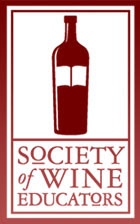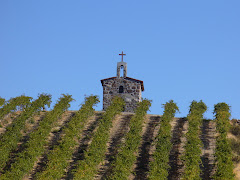First, let’s outline the Classification of 1855:
Chateau Haut-Brion, Pessac-Leognan
Chateau Lafite-Rothschild, Pauillac
Chateau Latour, Pauillac
Chateau Margaux, Margaux
Chateau Mouton-Rothschild, Pauillac
Chateau Lafite-Rothschild, Pauillac
Chateau Latour, Pauillac
Chateau Margaux, Margaux
Chateau Mouton-Rothschild, Pauillac
Second Growths
Chateau Brane-Cantenac, Margaux
Chateau Cos d’Estournel, St.-Estephe
Chateau Ducru-Beaucaillou, St.-Julien
Chateau Durfort-Vivens, Margaux
Chateau Gruaud-Larose, St.-Julien
Chateau Lascombes, Margaux
Chateau Leoville-Barton, St.-Julien
Chateau Leoville-Las-Cases, St.-Julien
Chateau Leoville-Poyferre, St.-Julien
Chateau Montrose, St.-Estephe
Chateau Pichon-Longueville-Baron, Pauillac
Chateau Pichon-Longueville-Comtesse-de-Lalande, Pauillac
Chateau Rauzan-Segla, Margaux
Chateau Rauzan-Gassies, Margaux
Third Growths
Chateau Boyd-Cantenac, Margaux
Chateau Calon-Segur, St.-Estephe
Chateau Cantenac-Brown, Margaux
Chateau Desmirail, Margaux
Chateau d’Issan, Margaux
Chateau Ferriere, Margaux
Chateau Giscours, Margaux
Chateau Kirwan, Margaux
Chateau Lagrange, St.-Julien
Chateau La Lagune, Haut-Medoc
Chateau Langoa-Barton, St.-Julien
Chateau Malescot-St.-Exupery, Margaux
Chateau Marquis d’Alesme-Becker, Margaux
Chateau Palmer, Margaux
Fourth Growths
Chateau Beycheville, St.-Julien
Chateau Branaire-Ducru, St.-Julien
Chateau Duhart-Milon-Rothschild, Pauillac
Chateau Lafon Rochet, St.-Estephe
Chateau la Tour-Carnet, Haut-Medoc
Chateau Marquis de-Terme, Margaux
Chateau Pouget, Margaux
Chateau Prieure-Lichine, Margaux
Chateau St.-Pierre, St.-Julien
Chateau Talbot, St.-Julien
Fifth Growths
Chateau Batailley, Pauillac
Chateau Belgrave, Haut-Medoc
Chateau Cantemerle, Haut-Medoc
Chateau Clerc-Milon, Pauillac
Chateau Cos Labory, St.-Estephe
Chateau Croizet-Bages, Pauillac
Chateau d’Armailhac, Pauillac
Chateau Dauzac, Margaux
Chateau du Carmensac, Haut-Medoc
Chateau du Tertre, Margaux
Chateau Grand-Puy-Ducasse, Pauillac
Chateau Grand-Puy-Lacoste, Pauillac
Chateau Haut-Bages-Liberal, Pauillac
Chateau Haut-Batailley, Pauillac
Chateau Lynch-Bages, Pauillac
Chateau Lynch-Moussas, Pauillac
Chateau Pedesclaux, Pauillac
Chateau Pontet-Canet, Pauillac
Obviously, the prestigious ones are the first growths, yet there are some terrific wines to be had in the other four classifications. The standouts are almost always (vintage after vintage): Leoville Las Cases (2nd growth), Cos d’Estournel (2nd growth), Lascombes (2nd growth), Pichon-Longueville-Comtesse de Lalande (2nd growth), Malescot-St.-Exupery (3rd growth), Beychevelle (4th growth), Prieure-Lichine (4th growth), Clerc-Milon (5th growth), d’Armailhac (5th growth) and Lynch Bages (5th growth). In past vintages, these wines were (and still are to some degree) a fraction of what the 1st growths cost, however, these wines, as the word gets out, are becoming more-and-more expensive.
Chateau Brane-Cantenac, Margaux
Chateau Cos d’Estournel, St.-Estephe
Chateau Ducru-Beaucaillou, St.-Julien
Chateau Durfort-Vivens, Margaux
Chateau Gruaud-Larose, St.-Julien
Chateau Lascombes, Margaux
Chateau Leoville-Barton, St.-Julien
Chateau Leoville-Las-Cases, St.-Julien
Chateau Leoville-Poyferre, St.-Julien
Chateau Montrose, St.-Estephe
Chateau Pichon-Longueville-Baron, Pauillac
Chateau Pichon-Longueville-Comtesse-de-Lalande, Pauillac
Chateau Rauzan-Segla, Margaux
Chateau Rauzan-Gassies, Margaux
Third Growths
Chateau Boyd-Cantenac, Margaux
Chateau Calon-Segur, St.-Estephe
Chateau Cantenac-Brown, Margaux
Chateau Desmirail, Margaux
Chateau d’Issan, Margaux
Chateau Ferriere, Margaux
Chateau Giscours, Margaux
Chateau Kirwan, Margaux
Chateau Lagrange, St.-Julien
Chateau La Lagune, Haut-Medoc
Chateau Langoa-Barton, St.-Julien
Chateau Malescot-St.-Exupery, Margaux
Chateau Marquis d’Alesme-Becker, Margaux
Chateau Palmer, Margaux
Fourth Growths
Chateau Beycheville, St.-Julien
Chateau Branaire-Ducru, St.-Julien
Chateau Duhart-Milon-Rothschild, Pauillac
Chateau Lafon Rochet, St.-Estephe
Chateau la Tour-Carnet, Haut-Medoc
Chateau Marquis de-Terme, Margaux
Chateau Pouget, Margaux
Chateau Prieure-Lichine, Margaux
Chateau St.-Pierre, St.-Julien
Chateau Talbot, St.-Julien
Fifth Growths
Chateau Batailley, Pauillac
Chateau Belgrave, Haut-Medoc
Chateau Cantemerle, Haut-Medoc
Chateau Clerc-Milon, Pauillac
Chateau Cos Labory, St.-Estephe
Chateau Croizet-Bages, Pauillac
Chateau d’Armailhac, Pauillac
Chateau Dauzac, Margaux
Chateau du Carmensac, Haut-Medoc
Chateau du Tertre, Margaux
Chateau Grand-Puy-Ducasse, Pauillac
Chateau Grand-Puy-Lacoste, Pauillac
Chateau Haut-Bages-Liberal, Pauillac
Chateau Haut-Batailley, Pauillac
Chateau Lynch-Bages, Pauillac
Chateau Lynch-Moussas, Pauillac
Chateau Pedesclaux, Pauillac
Chateau Pontet-Canet, Pauillac
Obviously, the prestigious ones are the first growths, yet there are some terrific wines to be had in the other four classifications. The standouts are almost always (vintage after vintage): Leoville Las Cases (2nd growth), Cos d’Estournel (2nd growth), Lascombes (2nd growth), Pichon-Longueville-Comtesse de Lalande (2nd growth), Malescot-St.-Exupery (3rd growth), Beychevelle (4th growth), Prieure-Lichine (4th growth), Clerc-Milon (5th growth), d’Armailhac (5th growth) and Lynch Bages (5th growth). In past vintages, these wines were (and still are to some degree) a fraction of what the 1st growths cost, however, these wines, as the word gets out, are becoming more-and-more expensive.
Some rising stars for value are Chateau Sociando-Mallet and Senejac (both Haut-Medoc). These unclassified chateaux are exceptional values. Parker even argues that Sociando-Mallet should become a 5th growth wine.
For Right Bank wines, St.-Emilion are classified, yet the top two – Chateau Cheval Blanc and Chateau Ausone – are typically astronomically priced. It’s difficult to find a good St.-Emilion out there for under $100 (Cheval Blanc and Ausone usually come in around $1200/bottle!), but they are out there. One particular St.-Emilion we carry that is superbly affordable is the Chateau St.-Georges St.-Georges St.-Emilion, which lies just outside the city of St.-Emilion.

And of course, the super rarity, that being Pomerol, is not classified at all. The tiniest commune in all of Bordeaux, wines like Petrus, Le Pin, Lafleur and Vieux-Chateau-Certan are equally pricy, topping out these days between $800 and $1200 per bottle. Their small production and amazing cellarability make these wines highly sought after the world over.
Most consumers new to Bordeaux want to know what to look for in good value producers. Regions such as Listrac, Moulis, Cotes de Francs and Fronsac are excellent ways to initiate yourselves in quality Bordeaux for not a lot of money. Chateau Fonreaud (Listrac-Medoc), Chateau Chasse-Spleen (Moulis), Chateau Puygueraud (Cotes de Francs) and Chateau Fontenil (Fronsac) are great examples of getting all you can out of the region for very little green.

Also, look for wines produced by or consulted on by enologists such as Michel Rolland (subject of the documentary Mondovino) and Jonathan Malthus, or negociants like Andre Lurton and Dourthe. These individuals or groups usually deal with multiple Chateaux and make sure that quality is high and accessibility is good.
Tomorrow, I’ll wrap things up with a look at the sweeter side of Bordeaux, as well as the peripheral region of the Dordogne.












No comments:
Post a Comment